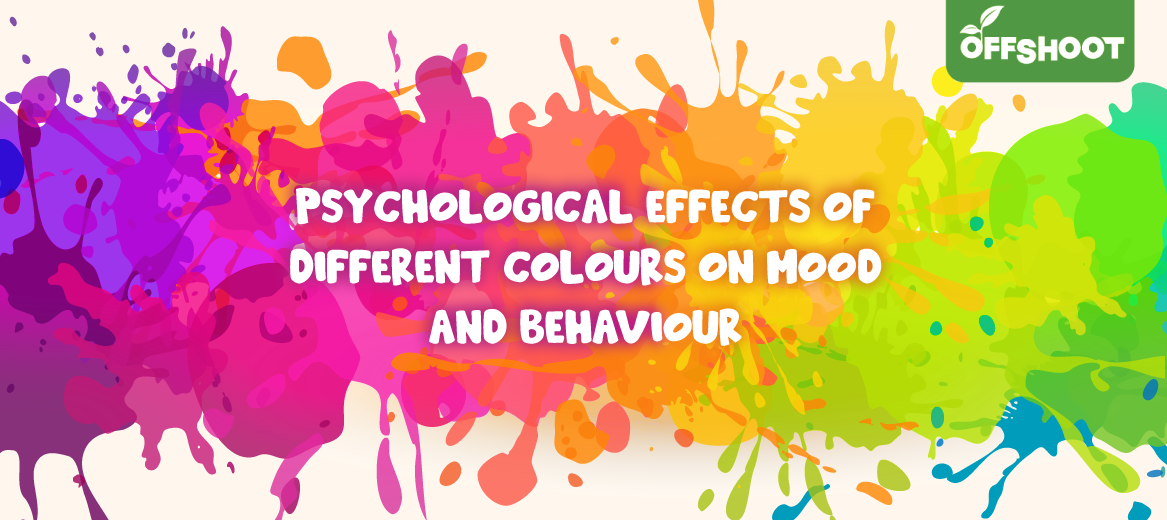
Psychological effects of different colours on mood and behaviour
| Offshoot Books
Our world is full of colours. From the harmony of green in plants, serenity of blue in waters, each shade carries its own aesthetic weight, shaping our experiences in profound ways. There is another interesting feature of colours, they have significant capacity to impact our psychology. In this blog, we will explore the profound impacts of some colours.
Red:
Characteristic: Primary
Implying Emotions: Power, Passion, Love
The colour red is a primary colour that suggests energy and vitality. It also acts as a symbol that demands urgent attention and ignites passion. There is a lot of literature that links red with love, courage, and intensity, igniting emotions and awakening the senses. However, red is a double edged sword. It can also evoke feelings of aggression or agitation.
Yellow:
Characteristic: Primary
Implying Emotions: Joy, Optimism, Creativity
Yellow radiates joy, optimism and creativity, infusing spaces with warmth and cheerfulness. It sparks mental activity, uplifts spirits and fosters a sense of playfulness. Yet, too much yellow can tip the scales towards anxiety or impulsivity, highlighting the delicate balance in colour psychology.
Blue:
Characteristic: Primary
Implying Emotions: Calmness, Trust, Tranquillity
Blue envelops us in a sense of calmness, trust and tranquillity, offering solace amidst life's chaos. It promotes relaxation, reduces stress and instils a feeling of security. However, an overdose of blue may veer into a territory marked by passivity or melancholy.
Orange:
Characteristic: Secondary
Implying Emotions: Enthusiasm, Creativity, Optimism
Orange is one of the easiest secondary colours to make. It can be made by mixing yellow and red. It suggests enthusiasm, creativity and optimism. It's also regarded as the hue of encouragement, inspiring confidence and vitality. Orange is also known to stimulate the appetite and foster social interaction.
Green:
Characteristic: Secondary
Implying Emotions: Growth, Harmony, Renewal
Green is probably the most commonly seen colour around us. It symbolises growth, harmony and renewal - something that nature conveys regularly. Green connects us to nature's soothing embrace. It calms the mind, reduces stress and promotes well-being.
Purple:
Characteristic: Secondary
Implying Emotions: Creativity, Luxury, Mystery
Purple is a colour that feels both warm and cool, mixing red and blue. It's often linked with creativity, luxury and a bit of mystery. Whether it's the rich clothes of kings or the soft petals of a flower, purple always seems fancy and elegant. You can see it in fields of lavender or in a colourful sunset. Purple makes us go deep into imagination and adds a special touch to our thoughts.
Beyond influencing one’s mood and behaviour, colours play a pivotal role in shaping our personal image and perception. Whether dressing for success or designing living spaces, understanding colour psychology empowers us to project the desired image and make strategic choices aligned with our goals and aspirations. As we navigate through the kaleidoscope of colours that adorn our world, let's pause to appreciate the profound impact they wield on our minds and surroundings. Whether painting the canvas of our lives or crafting our personal brand, colours can unlock new realms of creativity, confidence and self-expression.

Leave a comment
Your email address will not be published.